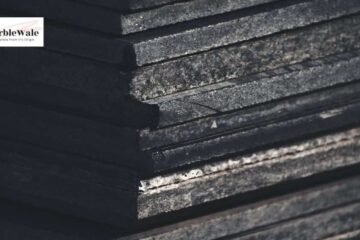The Intersection of Carpets and Contemporary Design

In the world of interior design, the marriage of tradition and innovation often leads to captivating results. The intersection of carpets and contemporary design is a prime example of this dynamic fusion. Carpets, once seen as traditional and conventional, are now reimagined to fit seamlessly into modern, cutting-edge spaces. In this article, we will delve into the evolution of carpet design, the elements that define contemporary style, and how these two worlds come together to create visually stunning and functionally practical interiors.
The Evolution of Carpet Design:
Carpets Dubai design has a rich history that spans centuries, with traditional patterns and craftsmanship dominating the landscape for a significant period. However, as design preferences evolved and modern aesthetics took center stage, the perception of carpets shifted. Instead of being viewed as purely functional floor coverings, carpets began to be seen as integral elements of interior design, capable of adding texture, color, and personality to a space.
Contemporary Design Elements:
Contemporary design, often synonymous with the present moment, is characterized by a focus on clean lines, simplicity, and a harmonious balance of form and function. Several key elements define contemporary design, shaping the way interiors are conceptualized and curated:
Simplicity
Contemporary design embraces the principle of simplicity, avoiding excessive ornamentation or unnecessary details. Clean lines and uncluttered spaces create a sense of openness and visual clarity.
Neutral Color Palettes
Neutral color schemes, often featuring whites, grays, and earth tones, dominate contemporary design. These subdued colors contribute to a calming and sophisticated atmosphere.
Innovative Materials
Contemporary spaces showcase a preference for innovative materials and cutting-edge technology. This includes the use of sustainable, eco-friendly materials that align with the modern focus on environmental responsibility.
Open Floor Plans
Open floor plans are a hallmark of contemporary design, promoting a fluid and flexible use of space. This design choice enhances connectivity between different areas of a home and allows for natural light to permeate throughout.
Bold Accents
While contemporary design often leans towards minimalism, bold accents and statement pieces are strategically incorporated to add visual interest. These accents serve as focal points within the space. See this: https://www.youtube.com/shorts/1MHRLfTiVG0
The Intersection of Carpets and Contemporary Design:
Modern Materials and Technology
The integration of contemporary design with carpets involves leveraging modern materials and technology. High-performance fibers, such as nylon and polyester, are used to create durable, stain-resistant carpets that withstand the demands of modern living. Additionally, advancements in weaving techniques and manufacturing processes allow for intricate patterns and textures to be achieved with precision.
Geometric Patterns and Clean Lines
Contemporary design often features geometric patterns and clean lines, and carpets have adapted to reflect this aesthetic. Carpets with bold geometric designs can anchor a room and complement the overall simplicity of contemporary interiors.
Neutral Tones and Subdued Elegance
The neutral color palette of contemporary design is reflected in carpets through subdued tones and elegant shades. Creams, grays, and muted colors dominate, creating a cohesive and calming backdrop for other design elements in the space.
Customization and Personalization
Contemporary design encourages personalization, and carpets have responded by offering a range of customizable options. From choosing specific colors to creating bespoke patterns, homeowners can tailor their carpets to suit their individual style and preferences. Read more: https://buzz10.com/
Texture Play
Contemporary design celebrates texture as a crucial element in creating visual interest. Carpets contribute to this by offering a variety of textures, from plush and shaggy to flat weaves. This allows for dynamic contrasts within a space.
Versatility in Placement
Unlike traditional carpet placements, contemporary design embraces versatility. Carpets are no longer confined to living rooms or bedrooms; they find their place in unexpected areas such as kitchens and bathrooms, seamlessly integrating with the overall design scheme.
Conclusion:
The intersection of carpets and contemporary design represents a harmonious blend of tradition and innovation. Through the evolution of materials, patterns, and customization options, they have emerged as integral components of modern interiors. As contemporary design continues to evolve, carpets will likely play an increasingly significant role in shaping the aesthetics and functionality of our living spaces. Embracing this intersection allows homeowners and designers alike to create environments that are not only visually stunning but also reflect the spirit of the times we live in.
Leave a reply
You must be logged in to post a comment.







